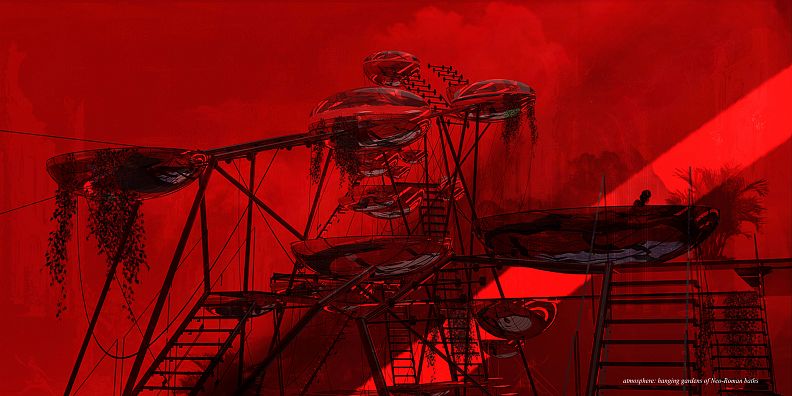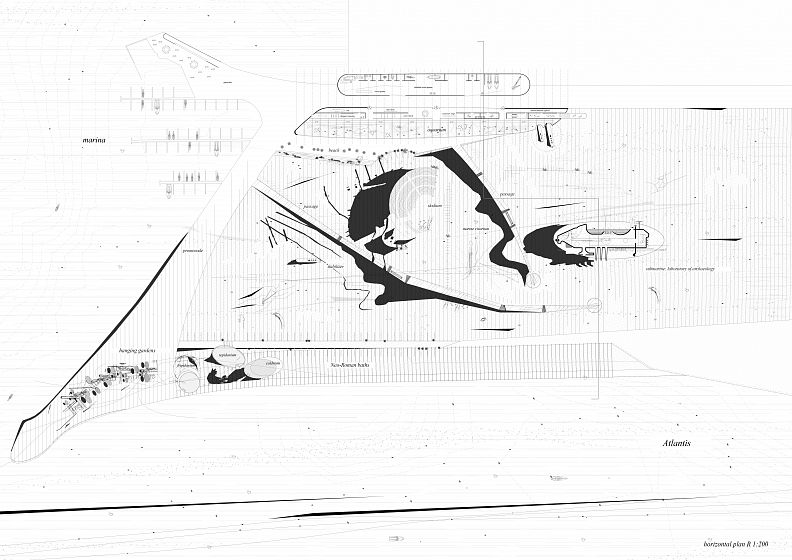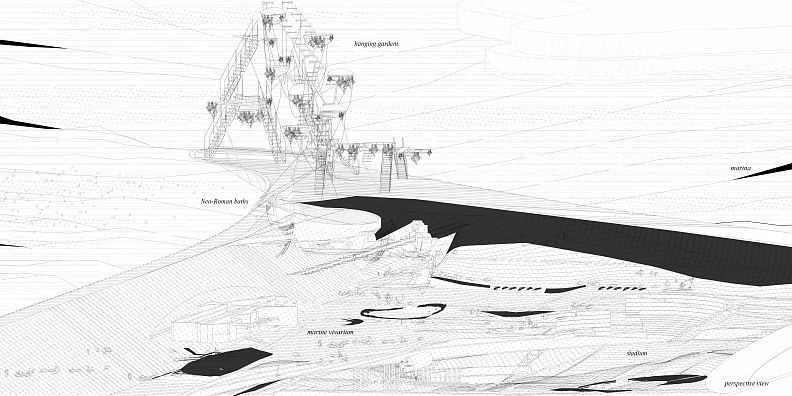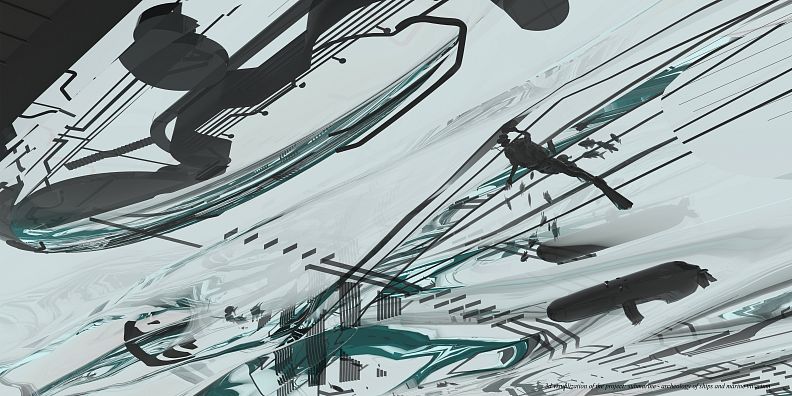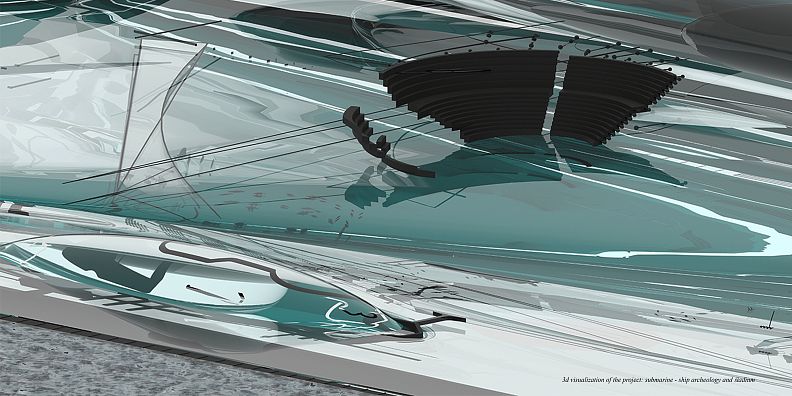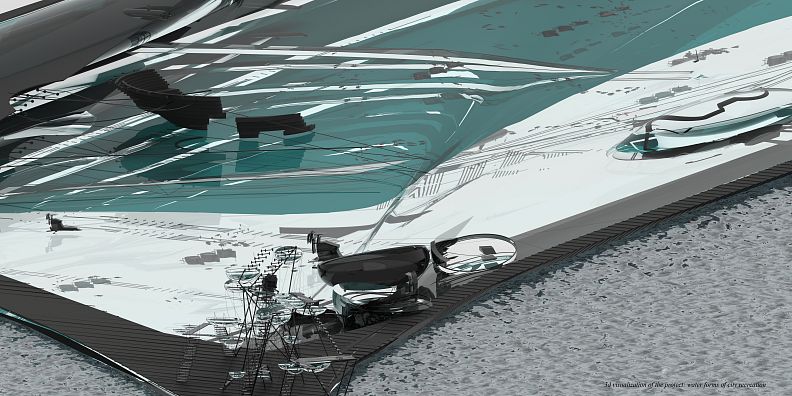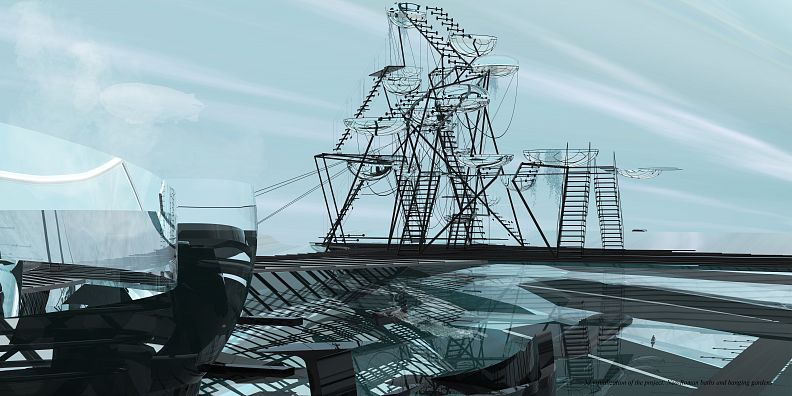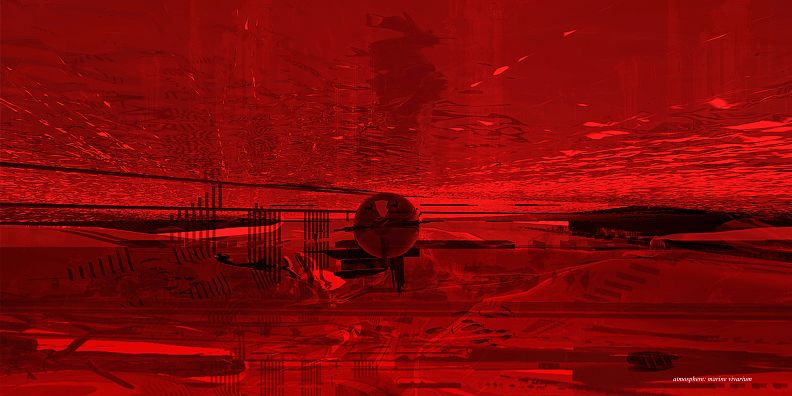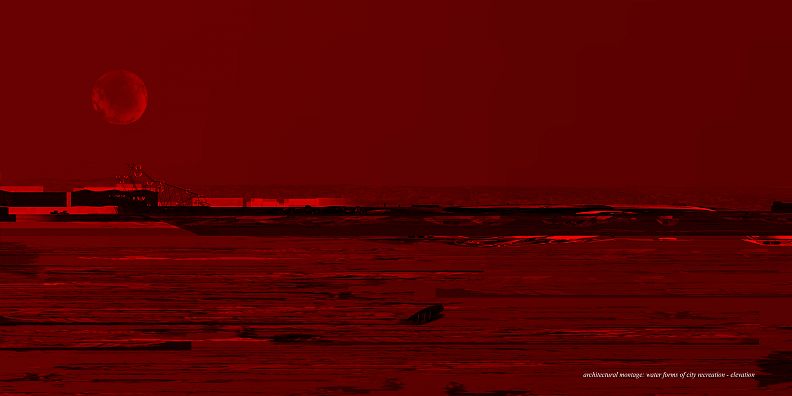New Atlantis

Project idea
The complex of new forms of recreation in Belgrade on the territory of the Port of Belgrade was constructed through the synthesis of the complex history, topography and archaeology of the sunken ships of Danube. By understanding the significance of the Danube River, analyzed through its position in the Roman Empire and through the potentials of unexplored archaeology of its soil, as well as the its flora and fauna, with reference to the elements of the recreation program, the idea of a project such as Atlantis is formed. More precisely, the project represents synthesis of water activities, which take place on the water and below its surface, and which create different types of recreation through the research of archaeology and flora and fauna of Danube. The mentioned activities are divided into several categories, of which the basic ones are: aquarium (which communicates with flora and fauna), marine vivarium (which communicates with archaeology), Neo-Roman baths (which communicate with history) and hanging gardens (which open dialogue with the future).
The idea of the project as Atlantis was impelled through the prism of Paolo Soleri's arcologies, using ecological systems for purification and lighting of water surfaces, in order to establish a relationship with the contemporary context. The essence of the project is defined by the discovery of new forms of recreation through the research of hydroarchaeology of the river soil of Danube.
Project description
Project represents a complex of recreational activities related to water, in which each visitor shares the unique experience of Danube history. The first major category, from which he begins his journey through the complex, aquarium, offers the experience of seeing and getting to know the rich flora and fauna of Danube. In the aquarium area, a restaurant, a bar, a souvenir shop and administration offices can be found, along with the skipper training spaces and sailing equipment department. After visiting the aquarium, a visitor is offered two choices: he can either continue to explore the wonders of Danube by entering into the submarine archaeology station, where he can see the remains of the sunken ships and learn about their history (this category is called marine vivarium), or he can just continue to walk towards the hanging gardens (the third category). Whichever path he chooses, the experience ends in the Neo-Roman baths, the final category. They create a reference to the history of Roman baths which were very common on the territory of Belgrade by consisting of three elementary parts of a Roman bath, frigidarium, tepidarium and caldrium, implemented in a contemporary context. Along with these elementary facilities, the complex contains a stadium for educational purposes, a marina, a beach for swimming and special infrastructure for water cleaning and lighting.
Technical information
The main materialisation used in the project is minimalistic, and it is consisted of concrete along with the stainless steel. Each monumental surface is treated with conrete, while infrastructure elements are made of steel. The complex is mainly organized by separating the major elements of program, which led to the perimeter form surrounding the central pool.
